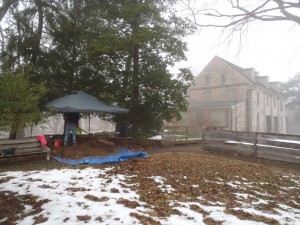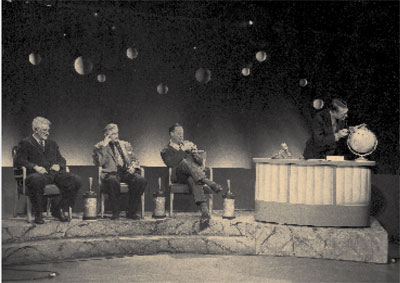Articles, Books, Videos & Blogs
Back to PAF Home
Back to Local Archaeology
~~~
A Selection of Articles, Papers, Books, Videos and Blogs on Philadelphia Archaeology
Click here for Philly-related archaeology books…
Click here for Philly-area archaeology blogs…
Click here for Philly-related archaeology videos…
*************************************************************************************************
FEATURED ARTICLES
*************************************************************************************************
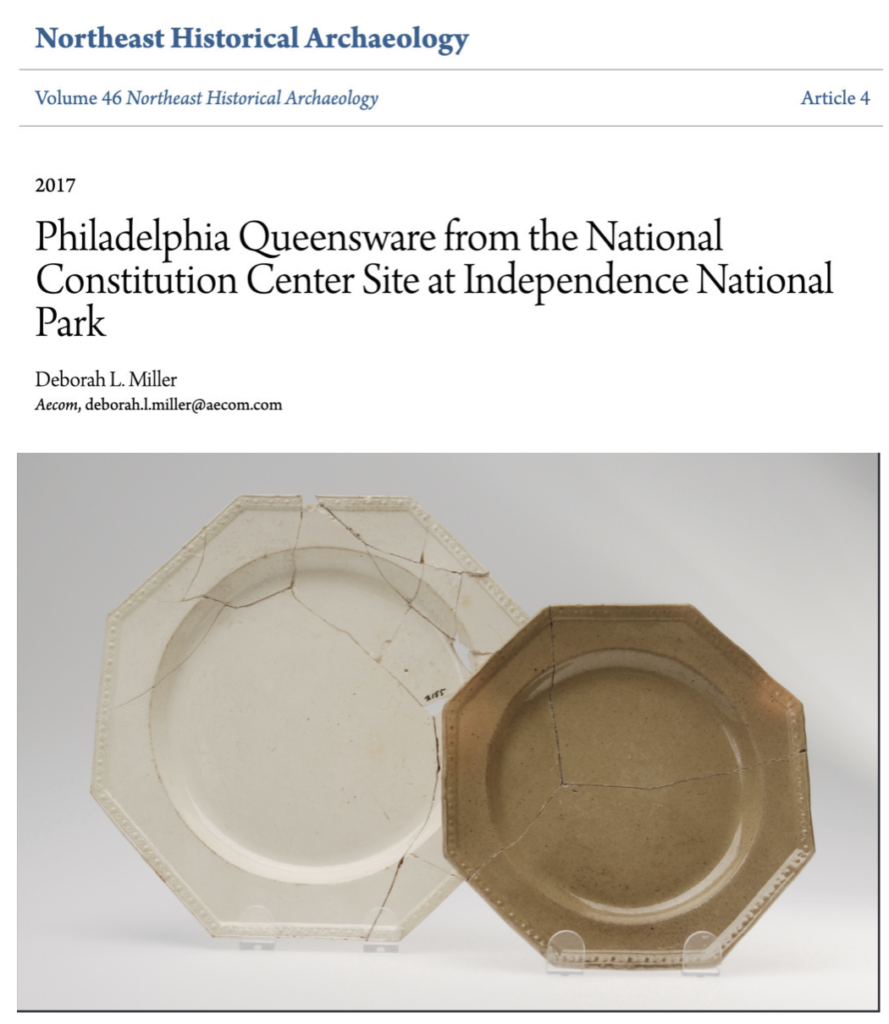
Read the full article here….
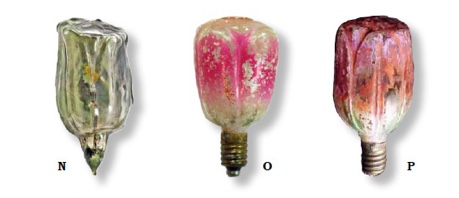
Lilies of the Fields, An Example of Early-20th Century Ornamental Light Bulb
This article, by Kenneth J. Basalik, Ph.D., President, CHRS, Inc., discusses an ornamental light bulb dating to early Christmas tree electrification. The bulb was discovered in a privy excavated in Marcus Hook. The write up is part of a poster made as part of a cultural resource mitigation. The poster is entitled, “Phase III Archaeological Survey of the Market Street Bridge Site (36De130) in Lower Chichester Township, Delaware County, Pennsylvania. The project work was conducted in 2013-2015 for the Pennsylvania Department of Transportation, the U.S. Department of Transportation, and the Federal Highway Administration.
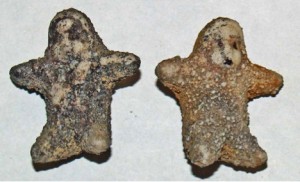
Not Abominable Snowmen, but Adorable Snow Babies!, by Kenneth J. Basalik, Ph.D., President, CHRS, Inc. This article is part of a poster made as part of a cultural resource mitigation. The poster is entitled, “Phase III Archaeological Survey of the Market Street Bridge Site (36De130) in Lower Chichester Township, Delaware County, Pennsylvania. The project work was conducted in 2013-2015 for the Pennsylvania Department of Transportation, the U.S. Department of Transportation, and the Federal Highway Administration.
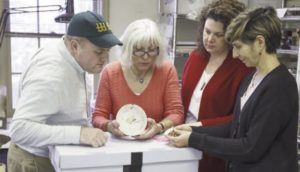
An Eighteenth-Century American True-Porcelain Punch Bowl
Robert Hunter and Juliette Gerhardt, Ceramics in America, 2016, Chipstone.
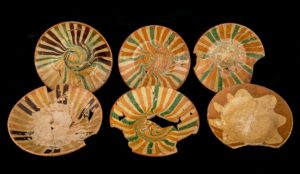
BURIED TREASURE: New Discoveries in Philadelphia Slipware from the Collection of the Museum of the American Revolution. Rob Hunter, New York Ceramics and Glass Fair web page for Loan Exhibitors.
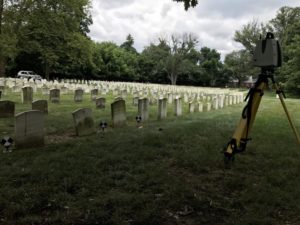
Mount Moriah Cemetery Research
Terrestrial Laser Scanning in Archaeology and Cultural Heritage Management, R&D Magazine, August 2017.
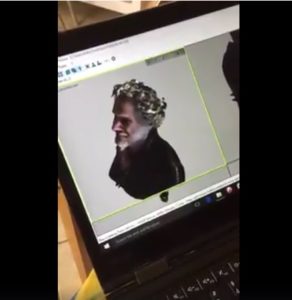
Philadelphia Story: “We the People” and 3D Scanning at the National Constitution Center Site
In August of 2016, artifacts excavated from the site of the National Constitution Center (NCC) in Independence National Historical Park were 3D scanned for an upcoming display at the NCC. Bernard Means of the Virtual Curation Laboratory at Virginia Commonwealth University blogged about on the process on August 14th, 2016. Means also scanned the mastodon tooth found at the Franklin Court site and he scanned NPS archaeologist Jed Levin and AECOM material culture specialist Debbie Miller! See Mean’s follow-up Facebook posts: painted 3D printed toy wooden boat, painted a 3D printed replica, auintal vase , child’s slip decorated dish, toothbrush, thimble, corset stay, slip pot, scanning a green glazed plate, scanning a cremeware baking dish, scanning NPS archeologist Jed Levin, carved wooden horse toy, 3D printed toy horse, wine bottle seal, domino, redware plate,a thimble, a 3D printing of the thimble, and very cool combination of two 3D scans– the Ben Franklin statue at the National Constitution Center’s signer’s room combined WITH the mastodon tooth discovered at the location of the Franklin mansion site of Franklin Court in Independence National Historical Park.
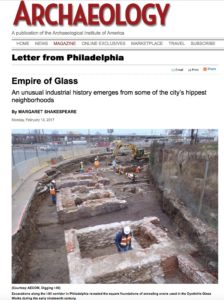
Dyottville Glass Factory archaeology is featured in this ARCHAEOLOGY MAGAZINE article entitled, Empire of Glass: An unusual industrial history emerges from some of the city’s hippest neighborhoods, by MARGARET SHAKESPEARE (February 2017).

The Things We Treasure
This reflection on archaeology by Elizabeth Mosier was published in the News Currents section of the Philadelphia Inquireron Jan. 3, 2016. Mosier, who is a writer, volunteered in the Independence National Historical Park archeology lab helping to process artifacts recovered from the National Constitution Center site.
 Bonnin and Morris Waste Bowl by Robert Hunter and Jeffrey Ray, Ceramics in America, Chipstone, 2007.
Bonnin and Morris Waste Bowl by Robert Hunter and Jeffrey Ray, Ceramics in America, Chipstone, 2007.
This article reports on a Bonnin and Morris slop or waste bowl excavated by archaeologist Barbara Liggett in New Market, Philadelphia, the area east of Second Street and between Pine and South streets about 1980.
***************************************************************
FEATURED JOURNAL
***************************************************************
Recent archaeological excavations in the Philadelphia waterfront communities North of the Benjamin Franklin Bridge — Port Richmond, Kensington-Fishtown, and the Northern Liberty — the topic of a new annual journal entitled River Chronicles. The new journal, to be published annually, is the creation of local Philadelphia and Southern New Jersey-based employees of AECOM, an American multinational engineering firm that provides design, consulting, construction, and management services to a wide range of clients.
AECOM is conducting excavations along Highway I-95 in Philadelphia as part of the I-95 Highway Improvement Project on behalf of the Pennsylvania Department of Transportation (PENNDOT) and the Federal Highway Administration. The new journal explores evidence of Native Americans, nineteenth-century glassworkers and potters, and everyday life in Philadelphia’s waterfront communities.
This first issue includes articles on the construction of privies (outhouses) (written by By George Cress and Daniel Eichinger), Native American life along the Delaware (by Doug Mooney), a saloon token (written by Thomas J. Kutys and Samuel A. Pickard), a moon man figurine (by Rebecca White), chamber pots (by Meta Janowitz), a Native American fire-cracked hearth (by Jeremy W. Koch), and a glass garden cloche (by Mary Mills). History about the Schuylkill Rangers gang is also presented (by Samuel Pickard) along with a write up about the web-based, interactive ‘smart report’ being created for the I-95 archaeology project (contributed by digital cultural specialists Mark Petrovich and Chester Cunanan). An introduction to the River Chronicles project is provided by Steve Tull, alongside a Letter from the Editor, Grace H. Ziesing.
Public Archaeology Via Skyscraper: Outcome and Experience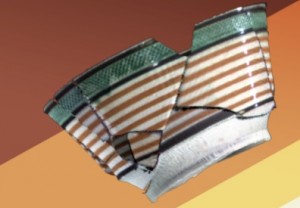
Public Archaeology Via Skyscraper: Outcome and Experience
Patrice L. Jeppson(1), Glen Muschio(2), Hannah Winograd(2),(3), Matthew Haas(2),(3), Geoffrey Oxholm(4), and Ko Nishino(4)
[1) Philadelphia Archaeological Forum; 2) Digital Media Program, College of Media Arts and Design, Drexel University; 3) STAR Fellowship Program, Pennoni Honors College, Drexel University; 4) Drexel University Computer Science Department; The 3D Colonial Philadelphia Project − Digital Restoration of Thin-Shell Objects for Historical Archeological Research and Interpretation (National Science Foundation IIS Grant 0803670)] A recent archaeology awareness campaign projected Public Service Announcements from the top of a Philadelphia city skyscraper — the PECO Building. These 30-second videos featured animated 3D artifact reconstructions alongside an archaeology-themed message. The videos were made by Drexel University students using Drexel University computer vision research data. This paper shows how communities make use of the past for their own needs in the present. Keywords: new media and archaeology, computational archaeology, convergence theory, dialogic public archaeology. In Online Journal in Public Archaeology, 2012(2):55-80.
See the 30 second long, 3D animated video produced in this project and projected from the skyscraper here… here…
Read about the digital updates of these public service announcements done in 2015 here and here, and see the completed video’s now projected each October from the skyscraper here and here…
***************************************************************************************************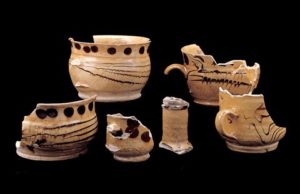
Samuel Malkin in Philidelphia: A remarkable Slipware Assemblage, by David G. Orr. Chipstone, Ceramics in America, 2003.
***************************************************************************************************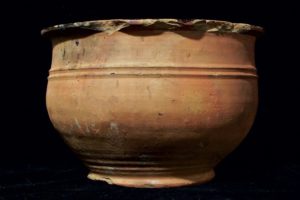
Three Incised Mid-Eighteenth-Century Vessels from Philadelphia, by Mara Kaktins and David G. Orr. Chipstone, Ceramics in America, 2008.
***************************************************************************************************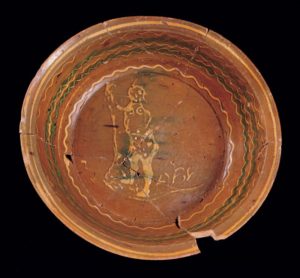
Indian at Stenton: A Trail Left in Slip on a Redware Bowl, by Laura C. Keim with David G. Orr. Chipstone, Ceramics in America, 2008.
***************************************************************************************************
“What’ll Thou Have”: Quakers and the Characterization of Tavern Sites in Colonial Philadelphia.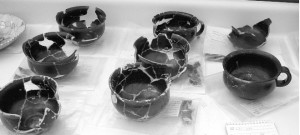
In this article, John Chenoweth explores the roles of taverns in colonial America, drawing upon artifacts excavated in Independence National Historical Park at the site of the National Constitution Center. Northeast Historical Archaeology,
***********************************************************************************************
Pioneer’s Life is Dug Up at Independence Hall: New Archaeological Approach Focuses on a Freed Slave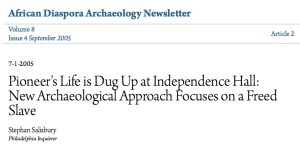
This article, by Stephan Salisbury, published in the African Diaspora Archaeology Newsletter in September 2005, is some of the earliest reporting on the archaeology of James Oronoko Dexter, whose home site was excavated in Independence National Historical Park.
***********************************************************************************************
City Garden
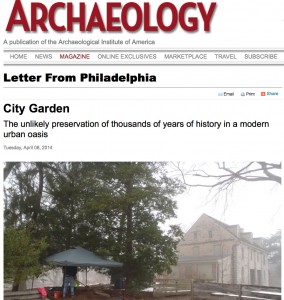
This article on the archaeology at Bartram’s Garden in Philadelphia was in the April, 2014 issue of Archaeology Magazine.
************************************************************************************************
Artifacts of Democracy:
Archaeology in the DNC Host City of Philadelphia
This webpage of content was created as part of an archaeological outreach social media campaign activated during the period of the Democratic National Convention held in Philadelphia July 25-28, 2016. Learn about the selected artifacts of Democracy here…
************************************************************************************************
The President’s House in Philadelphia: Liberty, Slavery, and the Creation of a New Nation
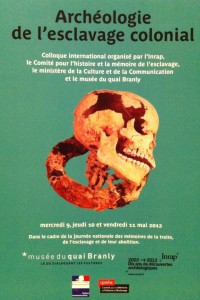
The President’s House à Philadelphie : la liberté, l’esclavage, et la création d’une nouvelle nation Publié le vendredi 20 avril 2012 · Mis à jour le vendredi 1 juin 2012, Archéologie de l’esclavage colonial. Par Jed Levin, musée d’archéologie et d’anthropologie de l’université de Pennsylvanie.
In English (second option shown) and French (first option, dubbed). Presentation by Jed Levin on the President’s House site given in Paris, France in May of 2012. Levin was invited to present the research as part of a conference on the archaeology of colonial slavery. The conference was convened in recognition of the 200th anniversary of the abolition of slavery in France. (21 minutes, 28 seconds)
***************************************************************************************************
This Week in Pennsylvania — Dyottville Glassworks
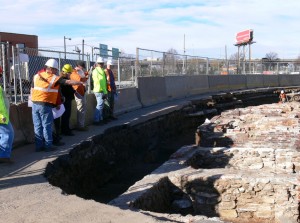
This article, a posting of The State Museum of Pennsylvania/Pennsylvania Historical and Museum Commission’s “This Week in Pennsylvania Archaeology” blog, discusses the excavations at the Dyottville Glassworks in Philadelphia.
***************************************************************************************************
Dealing With Urban Archaeological Finds, an Example from Philadelphia
This 2012 paper, by Ken Basalik, PhD, (CHRS, Inc.), draws upon archaeological discoveries at Logan Square – including burials – to discuss urban archaeology practice.
***************************************************************************************************
A Biography of Paul Schumacher
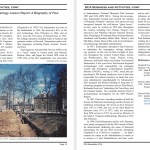
This article chronicles the history of an important Philadelphia archaeologist. The article was written by Karen Swope as a Society for Historical Archaeology Liaison Report to the Society for California Archaeology (Vol. 47, Issue 3, 2013).
***************************************************************************************************
Independence NHP Welcomes Australian Churchill Fellow Louise Zarmati
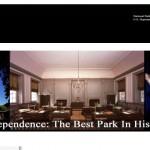
Australian Churchill Fellow Louise Zarmati visit to Philadelphia in the summer of 2013 is explained in this Independence Park Quarterly Newsletter article. Dr. Zarmati’s research focuses on how archaeology is used to teach national history.
***************************************************************************************************
This Week in Pennsylvania Archaeology — Philadelphia County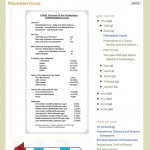
This June 28, 2013 blog posting summarizing the archaeology of Philadelphia County is by The State Museum of Pennsylvania/Pennsylvania Historical and Museum Commission.
***************************************************************************************************
Public Historical Archaeology in the Mid-Atlantic Region
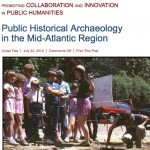
This July 2012 post by Rebecca Yamin was written for the M.A.R.C.H. (Mid Atlantic Regional Center for the Humanities at Rutgers University, Camden) blog Promoting Collaboration and Innovation in Public Humanities.
***************************************************************************************************
Interstate I-95 Artifacts Showcased in Philadelphia
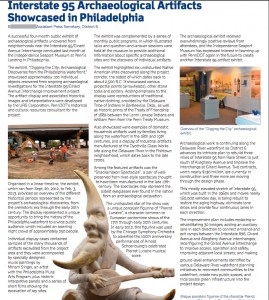
Write up of the exhibit at the Independence Seaport Museum by the Pennsylvania Department of Transportation’s Gene Blaum (Public Relations, District 6) in E-PennDot Digest, April/May 2013. PDF — scroll to page 9.
***************************************************************************************************
British Redoubt No. 1 — Archaeology at Point Pleasant
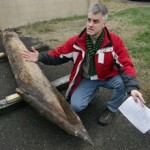
2008. A discussion about whether further archeology at the site of the proposed SugarHouse Casino might help reveal the location of British Redoubt [fort] No.1. Compiled by Torben Jenk with contributions from Denis Cooke, Ken Milano, Rich Remer, Hal Schirmer, Dr. Robert Selig & others. Hosted at the Oliver Evans Chapter of the Society for Industrial Archaeology web page, Workshop Of The World — A Selective Guide to the Industrial Archeology of Philadelphia.
Click here…
*************************************************************************************************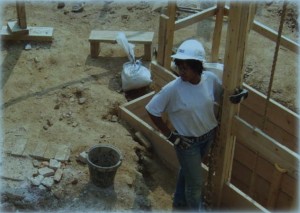
Digging Our Past
The Philadelphia Women’s Journal. Oct/Nov 2008:27
The activities of several female archaeologists are featured in this article published in a Philadelphia monthly in 2008. The article, by Patrice L. Jeppson, highlights talk being presented at the 2008 “Explore Philly’s Buried Past” archaeology month celebration.
***************************************************************************************************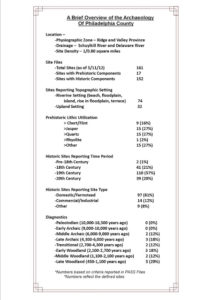
A Brief Overview of the Archaeology of Philadelphia County, 2013. This Week in Pennsylvania Archaeology, The State Museum of Pennsylvania/Pennsylvania Historical and Museum Commission.
***************************************************************************************************![]()
Black History Showcase Features African American Archaeology This report by Patrice L. Jeppson was published in the July 2010 issue of the African Diaspora Archaeology Newsletter. It reports on an exhibit of Philadelphia-area African American archaeology that was presented in March as part of the annual Black History Month Showcase at the Convention Center.
***************************************************************************************************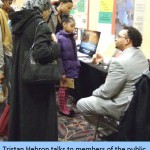
2010 CU Participation in the 7th Annual Black History Showcase
(scroll to page 2)Vital Communications, Cheyney University newsletter, 3(4):2, April.
***************************************************************************************************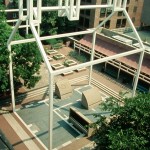
2006 Independence NHP Archeology at Franklin Court. This summary on the archaeological assessment done for the Benjamin Franklin Tercentenary was written by Patrice L. Jeppson for NPS Archeology in Parks collumn of the NPS Archaeology E-gram.
***************************************************************************************************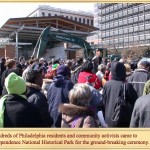
2007 The Archaeology of Freedom and Slavery at the President’s House, Philadelphia, Pennsylvania. This brief report by Patrice L. Jeppson was published in the July 2007 issue of the African Diaspora Archaeology Newsletter.
***************************************************************************************************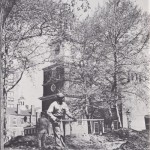
1960 Digging an Historical Shrine: Philadelphia’s Independence Park [PDF format]. This 1960 article by John L. Cotter was published in Expedition, the Magazine of the University of Pennsylvania Museum of Archaeology and Anthropology. Volume 2(3), Pages 28-32.
***************************************************************************************************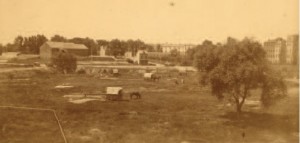
2005 What was there before the Museum? [PDF format]. Ann Blair Brownlee wrote this article about the site of the University of Pennsylvania’s Museum of Archaeology and Anthropology. It was published in Expedition, the Magazine of the University of Pennsylvania Museum of Archaeology and Anthropology in 2005. Volume 47, Number 1.
***************************************************************************************************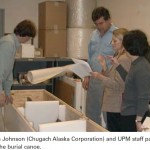
2003 Out of Heaviness, Enlightenment: NAGPRA and the University of Pennsylvania Museum of Archaeology and Anthropology [PDF format]. This 2003 article by Robert W. Preucel, Lucy F. Williams, Stacey O. Espenlaub and Janet Monge discusses the return to Native Americans of artifacts held in the collections of the University of Pennsylvania’s Museum of Archaeology and Anthropology. This article was published in Expedition, the Magazine of the University of Pennsylvania Museum of Archaeology and Anthropology. Volume 45(3), Pages 21-27.
***************************************************************************************************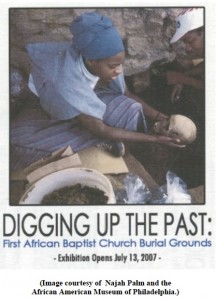
2007 Digging Up the Past: An Exhibit Review [PDF format]. This review presents an archaeological perspective on the First African Baptist Church Burial Grounds exhibit at the African American Museum of Philadelphia (AAMP). Written by historical archaeologist Patrice L. Jeppson, it was published in the September 2007 issue of the African Diaspora Archaeology Newsletter.
***************************************************************************************************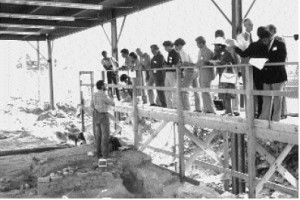
1996 Engaging the Public Through Mortuary Archeology: Philadelphia’s First African Baptist Church Cemeteries [PDF format]. This article by physical anthropologist Thomas A. J. Crist and archaeologist Daniel G. Roberts was published in 1996 in the government publication, CRM (No. 10 — 1996, Vol. 9, pages 5-7).
***************************************************************************************************
1998 Plates in Graves: An Africanism? Archaeologist John P. McCarthy prepared these comments for a panel discussion entitled ‘Lessons from Historic Period Cemeteries’. It includes data on Philadelphia’s First African Baptist Church Cemeteries. The talk was held at the 1998 Meeting of the Society for Historical Archaeology, Atlanta.
***************************************************************************************************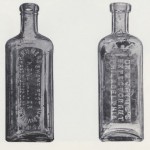
1981 Medical Archaeology in Philadelphia: A Study of Early Twentieth Century Medicine Bottles Excavated at Bartram’s Garden [PDF format] by Michael Parrington, 1981, Volume 23(3), Pages 34-38.
***************************************************************************************************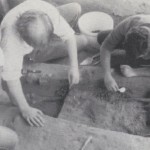
1986 Acculturation in an Urban Setting: The Archaeology of a Black Philadelphia Cemetery” [PDF format, 4.3MB], by Michael Parrington; Janet Wideman, 1986, Volume 28(1), Pages 55-62.
***************************************************************************************************
The Good, the Bad, and the Ugly:
Bioarchaeology and the Modern Gun Culture Debate
[*PAGES 118-119 of which report and analyze gunshot victims in the Philadelphia archaeological record, namely ca. 1750–1799 burials at the Second Presbyterian Church Burial Ground excavated during construction of the National Constitution Center and from the First African Baptist Church Burial Ground, dating between ca. 1810 and 1822, discovered in the 1990’s during construction of the Vine Street Expressway.
By Thomas A. Crist
Historical Archaeology, 2006, 40(3):109–130.
In this article, Crist considers “personal gun ownership during the early history of what is now the United States that lies at the root of the modern argument between supporters of gun control and those whose interpretation of the Second Amendment endows private citizens with the right to keep and bear arms”. Using historical evidence, including from early burials in Philadelphia, he shows that with growing gun ownership, during and after the 1830s, “an ever-increasing number of homicides (have) resulted from gunfire, particularly in the large cities” (Crist, HISTORICAL ARCHAEOLOGY 40(3):126.
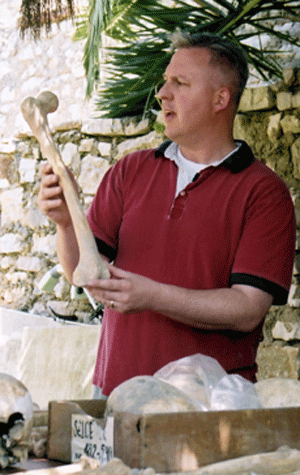
Previously Director of Archaeological Services at Kise Straw & Kolodner Inc. in Philadelphia and now a consultant to AECOM Corporation, Dr. Crist has served since 1990 as the Forensic Anthropologist for the Philadelphia Medical Examiner’s Office. He is a member of the U.S. Public Health Service’s Disaster Mortuary Operational Response Team (DMORT) and served two deployments assisting in the recovery and identification of victims from the World Trade Center attacks in 2001. Since 1992, Dr. Crist has been an Adjunct Professor at the School of Dental Medicine at the University of Pennsylvania, where he co-teaches an annual short course in Forensic Dentistry and Anthropology every spring. In 1994, Dr. Crist was one of three co-founders of the American Academy of Forensic Science’s Young Forensic Scientists Forum and served as the group’s first secretary.
***************************************************************************************************
FEATURED TALK
The Creation of I-95 in Philadelphia and the Rise of Historical Archaeology: Or, How I Stopped Worrying about Classicism and Loved the Sherd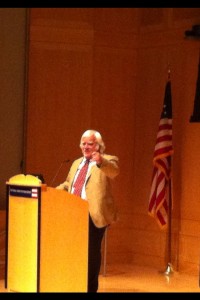
Temple University’s Dr. David Orr discussed the history of 1970’s-era Philadelphia archaeology during this October 2012 Archaeology Month talk presented at Explore Philly’s Buried Past, 2012. Read the text of Dr. Orr’s presentation here…
***************************************************************************************************
Ben’s House: Designing History at Franklin Court, Philadelphia, by Frank G. Matero. Heritage, Conservation and Archaeology, Archaeological Institute of America, 2010.
***************************************************************************************************
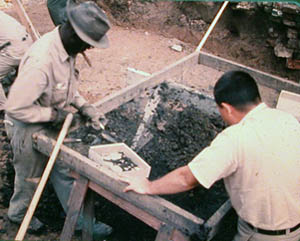
Independence NHP Archeology at Franklin Court, National Park Service- Archeology in the Parks.
****************************************************************************************************
Independence National Historical Park | FRANKLIN COURT COURTYARD, by National Park Planner
****************************************************************************************************
Mastodon Tooth from Franklin Court, Virtual Curation laboratory, Virginia Commonwealth University (Bernard Means), 2016.
***************************************************************************************************
Could they have invented it? @Digging In The Archives: Archiving the archeological research of Independence National Historical Park, 1950-2000.
Blog posting by Patrice L Jeppson, June 23, 2009
A wonderful discovery! While inventorying a file of History Office correspondence [at Independence National Historical Park] I came across a 1961 letter from the Park Superintendent that reports on “an ultrasonic cleaning device in use for cleaning archeological artifacts”. I wondered, Could it be that archaeologists working at INDE came up with this artifact processing method? Today it is common to find ultrasonic cleaners in archaeology labs….Then I found the clincher, a letter from an employee at Circo Ultrasonic Corporation (in New Jersey) asking how their device — a Model PG 60 generator and 60 T transducerized tank of 1-gallon capacity — had fared when put to this “unusual” task. The response from archaeologist B. B. Powell describes the INDE experiments trying different cleaning agents and the “excellent” results”.
See the archaeological record documents and read the whole blog posting about this important local invention that is now commonplace in archaeology labs here…
***************************************************************************************************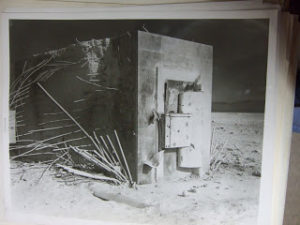
Cold War Archaeology? By Patrice L. Jeppson, 2010 blog posting at Digging In The Archives, Archiving the archeological research of Independence National Historical Park, 1950-2000.
Recent discoveries in the Archives at Independence National Historical Park include evidence related to an important period in American history – the almost five decades of military tension and economic and political hostilities (later 1940s-early 1990s) waged between the U.S. and the U.S.S.R. and their affiliated allies and satellite states that is known as ‘the Cold War’. Among its many impacts, this period of history left an important cultural landscape in the United States, including, it appears, a possible Cold War archaeology component at Independence National Historical Park.
*****************************************************************************************************
What in the World? 50’s TV Show on Archaeology
An early popular television show starred an unlikely subject and celebrity. “What in the World?”—the first network program featuring archaeology—debuted on Philadelphia’s CBS affiliate WCAU-TV in 1950 and ran for 16 years:
—
What in the World? was the first ever American network television series on archaeology. It began in 1950, the inspiration of Froelich Rainey, Penn Museum director from 1947 to 1977, and was produced collaboratively by the Museum and Philadelphia’s WCAU-TV.The show followed a wonderfully simple format: three experts (two curators from the Museum and one guest) are challenged to identify mysterious objects from the Museum’s storerooms. The panelists do not compete for money or prizes, instead they work together to solve the puzzle. A moderator (usually Rainey himself) oversees the proceedings. The audience have the advantage over the experts, having been informed of the objects’ identities ahead of time.
The show captivated audiences with its exciting and sometimes hilarious blend of erudition and informality. From 1951 to 1955 it was syndicated nationally on CBS, and was broadcast on more than eighty television stations around the country. In 1952, it received the prestigious Peabody Award. Unfortunately, however, the program never obtained a sponsor, and returned to local broadcast in 1957. Nevertheless, fan acclaim always remained high, and although WCAU threatened to cancel the show, viewers demanded it back. From 1963 to 1966 it also aired on non-commercial stations in a number of states, via the National Education Television (precursor to PBS). The end came in 1966 when What in the World? was finally cancelled by WCAU.
Rainey “saw the possibility of taking archaeology and anthropology to the millions via television.” The success of What in the World? can be measured by its remarkable longevity, fan loyalty, and critical acclaim, and it remains a testament to Froelich Rainey’s inspirational vision and innovation.
Twelve of the episodes can be viewed on line here….
The University of Pennsylvania museum’s magazine, Expedition, features this article on the show as well as its digital and archival collections related to the program.
***********************************************************************************************************
Click here for Philly-related archaeology books…
Click here for Philly-area archaeology blogs…
Click here for Philly-related archaeology videos…
by admin

